Duke of Newcastle upon Tyne is a title that has been created three times. The related title Duke of Newcastle-under-Lyne [sic] has been created once to provide a slightly more remote special remainder. The title first was conferred in 1665 when William Cavendish was made Duke of Newcastle upon Tyne. He was a prominent Royalist commander in the Civil War. He had already been elevated as Viscount Mansfield in 1620, Baron Cavendish of Bolsover and Earl of Newcastle upon Tyne in 1621 and Marquess of the latter in 1643, and was created Earl of Ogle as main subsidiary title to the dukedom to be used as a courtesy style for his heir presumptive.

Earl of Cardigan is a title in the Peerage of England, currently held by the Marquesses of Ailesbury, and used as a courtesy title by the heir apparent to that Marquessate, currently David Brudenell-Bruce, Earl of Cardigan, son of the 8th Marquess. The Brudenell family descends from Sir Robert Brudenell, Chief Justice of the Common Pleas from 1520 to 1530. His great-grandson, Sir Thomas Brudenell, was created a Baronet in the Baronetage of England, styled "of Deene in the County of Northampton", on 29 June 1611. On 26 February 1628, he was raised to the Peerage of England as Baron Brudenell, of Stanton Wyvill in the County of Leicester, and on 20 April 1661 he was further honoured when he was made Earl of Cardigan, also in the Peerage of England. On his death, the titles passed to his son, Robert, the 2nd Earl, and on the 2nd Earl's death to his grandson, George, the 3rd Earl, the 2nd Earl's only son, Francis, Lord Brudenell, having predeceased his father.
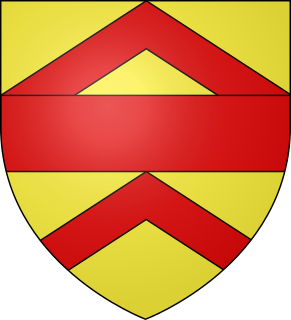
Baron FitzWalter is an ancient title in the Peerage of England. It was created on 24 June 1295 for Robert FitzWalter. The title was created by writ, which means that it can descend through both male and female lines. His great-grandson, the fourth baron, was an Admiral of the Fleet. The fourth baron's grandson, the sixth baron, died from dysentry at the siege of Harfleur. He was succceeded by his brother, the seventh baron, who in turn was succeeded by his daughter and only child, Elizabeth. She was the wife of John Radcliffe. Their son, the ninth baron, was attainted for treason in 1495 with his title forfeited. However, his son Robert Radcliffe obtained a reversal of the attainder by Act of Parliament in 1509 and later served as Lord Lieutenant of Lancashire. He was created Viscount FitzWalter in 1525 and Earl of Sussex in 1529. His grandson, the third earl, was summoned to the House of Lords through a writ of acceleration in 1553 in his father's junior title of Baron FitzWalter. Lord Sussex later served as Lord Deputy of Ireland. He was succeeded by his younger brother, the fourth earl. He had earlier represented Maldon, Hampshire and Portsmouth in the House of Commons and also served as Lord Lieutenant of Hampshire. When he died the titles passed to his only child, the fifth earl. He was Lord Lieutenant of Essex.
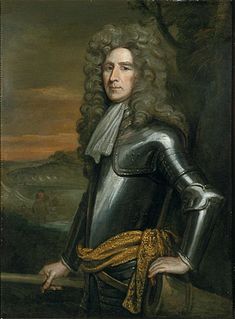
Earl of Romney is a title that has been created twice.

Earl of Chichester is a title that has been created three times in British history. The current title was created in 1801 for Thomas Pelham, 2nd Baron Pelham of Stanmer in the Peerage of the United Kingdom.

Earl of Lonsdale is a title that has been created twice in British history, firstly in the Peerage of Great Britain in 1784, and then in the Peerage of the United Kingdom in 1807, both times for members of the Lowther family.

Earl of Verulam is a title in the Peerage of the United Kingdom. It was created in 1815 for James Grimston, 4th Viscount Grimston. He was made Viscount Grimston at the same time. Verulam had previously represented St Albans in the House of Commons. In 1808 he had also succeeded his maternal cousin as tenth Lord Forrester. He was succeeded by his son, the second Earl. He was a Tory politician and held minor office in the first two governments of the Earl of Derby. His son, the third Earl, represented St Albans in Parliament as a Conservative. His grandson, the sixth Earl was nominated to the traditionally safe seat of St Albans for the party. As of 2017 the titles are held by his son, the seventh Earl, who succeeded in 1973.

Earl of Strafford is a title that has been created three times in English and British history.
Baron Inchiquin is one of the older titles in the Peerage of Ireland. It was one of two titles created on 1 July 1543 for Murrough O'Brien, Prince of Thomond, who was descended from the great high king Brian Boru. The grant of the English titles was conditional upon the abandonment of native titles, the adoption of English customs and laws, pledging of allegiance to the English crown, apostasy from the Catholic Church, and conversion to the Anglican Church. Murrough was made both Earl of Thomond in the Peerage of Ireland, with remainder to his nephew Donough O'Brien and Baron Inchiquin, with remainder to his male heirs.
Baron Ravensworth, of Ravensworth Castle in the County Palatine of Durham and of Eslington Park in the County of Northumberland, is a title in the Peerage of the United Kingdom.
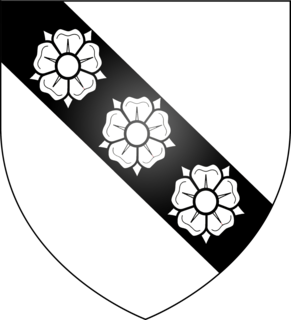
Baron Hunsdon is a title that has been created three times.

Viscount Grandison, of Limerick, is a title in the Peerage of Ireland. It was created in 1620 for Sir Oliver St John, the Lord Deputy of Ireland. He was the descendant and namesake of Oliver St John, whose elder brother Sir John St John was the ancestor of the Barons St John of Bletso and the Earls of Bolingbroke. Moreover, St John's nephew Sir John St John, 1st Baronet, of Lydiard Tregoze, was the ancestor of the Viscounts Bolingbroke and the Viscounts St John.

Viscount Fauconberg, of Henknowle in the Bishopric of Durham, was a title in the Peerage of England held by the head of the Belasyse family. This family descended from Sir Henry Belasyse, High Sheriff of Yorkshire from 1603 to 1604, who was created a Baronet, of Newborough in the County of York, in the Baronetage of England in 1611. His son, Sir Thomas, the second Baronet, was created Baron Fauconberg, of Yarm in the County of York, in the Peerage of England in 1627. In 1643 he was further honoured when he was made Viscount Fauconberg, of Henknowle in the Bishopric of Durham, also in the Peerage of England. He was succeeded by his grandson, Thomas, the second Viscount, the son of the Honourable Henry Belasyse. Thomas was created Earl Fauconberg in the Peerage of England in 1689. He was childless and the earldom became extinct on his death in 1700. He was succeeded in the remaining titles by his nephew and namesake, Thomas, the third Viscount, the son of Sir Rowland Belasyse. The third Viscount was succeeded by his son, Thomas, the fourth Viscount, who in 1756 was created Earl Fauconberg, of Newborough in the County of York, in the Peerage of Great Britain. The Earl's son Thomas, the second Earl, had no sons and the earldom became extinct on his death in 1802. He was succeeded in the remaining titles by his second cousin Rowland Belasyse, the sixth Viscount, the grandson and namesake of Rowland Belasyse, younger brother of the third Viscount. The sixth Viscount was succeeded by his younger brother, Charles the seventh Viscount, on whose death in 1815 all the titles became extinct.
Earl of Clare was a title of British nobility created three times: once each in the peerages of England, Great Britain, and Ireland.

Earl of Pomfret was a title in the Peerage of Great Britain created in 1721 for Thomas Fermor, 2nd Baron Leominster. It became extinct upon the death of the fifth earl in 1867.
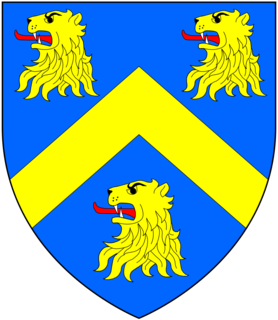
Earl of Egremont was a title in the Peerage of Great Britain. It was created in 1749, along with the subsidiary title Baron of Cockermouth, in the County of Cumberland, for Algernon Seymour, 7th Duke of Somerset, with remainder to his nephews Sir Charles Wyndham, 4th Baronet, of Orchard Wyndham, and Percy Wyndham-O'Brien. The Duke had previously inherited the Percy estates, including the lands of Egremont in Cumberland, from his mother Lady Elizabeth Percy, daughter and heiress of Joceline Percy, 11th Earl of Northumberland. In 1750 Sir Charles Wyndham succeeded according to the special remainder as second Earl of Egremont on the death of his uncle. His younger brother Percy Wyndham-O'Brien was created Earl of Thomond in 1756.
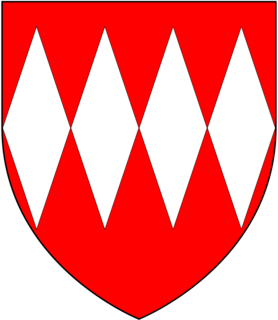
Baron Carteret is a title that has been created twice in British history, once in the Peerage of England and once in the Peerage of Great Britain. The first creation came into the Peerage of England in 1681 when the fourteen-year-old Sir George Carteret, 2nd Baronet, was made Baron Carteret, of Hawnes in the County of Bedford. The peerage was originally proposed for his grandfather Sir George Carteret, 1st Baronet, a celebrated royalist statesman, but he died before he was granted the title and as his eldest son, Philip, predeceased him, it was eventually bestowed on his grandson, George, with remainder to the latter's brothers. The Baronetcy, of Metesches in the Island of Jersey, had been created for George Carteret in the Baronetage of England on 9 May 1645. Lord Carteret married Lady Grace Granville, daughter of John Granville, 1st Earl of Bath. In 1715 Lady Grace was raised to the Peerage of Great Britain in her own right as Viscountess Carteret and Countess Granville. Lord Carteret and Lady Granville were both succeeded by their son John Carteret, the second Baron and second Earl. The titles became extinct on the death of the latter's son Robert Carteret, the third Earl, in 1776.

John Holles, 2nd Earl of Clare was an English nobleman.
Denzil Holles, 3rd Baron Holles was an English statesman, son of Francis Holles, 2nd Baron Holles, and grandson of Denzil Holles, 1st Baron Holles.

Earl of Arran is a title in the Peerage of Ireland. It is not to be confused with the title Earl of Arran in the Peerage of Scotland. The two titles refer to different places: the Aran Islands in Ireland, and the Isle of Arran in Scotland. The Irish earldom is held by the Gore family. The Scottish earldom is a separate title, held as a subsidiary title of the Duke of Hamilton.










